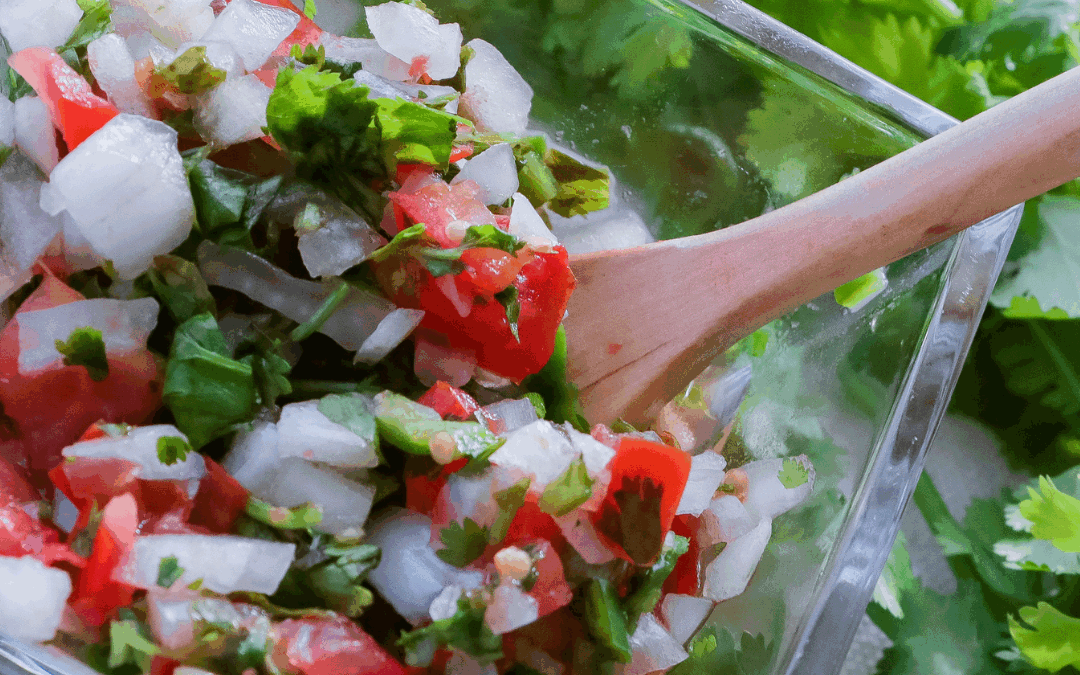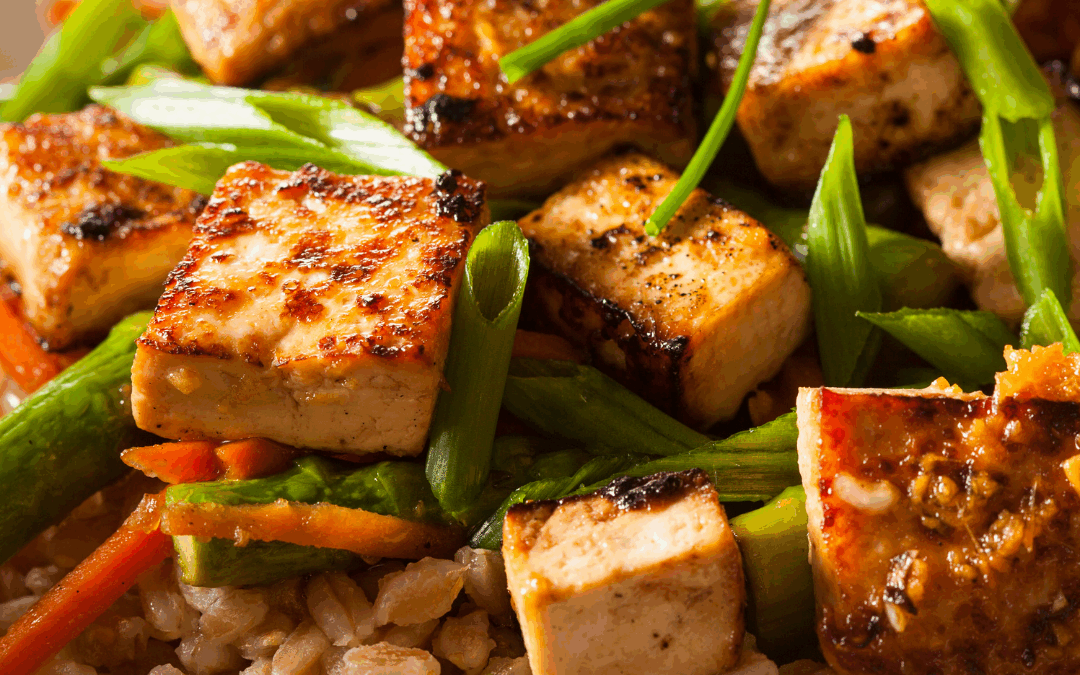
by Guest | Jun 16, 2025 | Being Well, Eat Well, Featured, Uncategorized
Written by: Lewis Martin, MS, RD, LD
Our bones do a lot for us—they help us stand, move, and protect important parts inside our bodies. To keep our bones strong and healthy, we need the right kinds of food and nutrients. One of the best food groups for bones is dairy. Dairy foods like milk, cheese, and yogurt are packed with beneficial nutrients that help build and protect bones throughout life: from childhood through old age.
Let’s take a look at some of the ways dairy helps support our bones and bodies at all life stages.
1. Builds Peak Bone Mass in Childhood and Teen Years
Kids and teens grow quickly, and that means their bones are growing fast too! During this time, our bodies need more calcium than usual to build strong and healthy bones to achieve peak bone mass, or the highest amount of bone density achieved by an individual in their lifetime, which typically peaks during young adulthood.
- Dairy foods are the best source of calcium, which is the main building block of bones.
- One glass of milk has about 300 milligrams of calcium—that’s a big help toward the daily goal of about 1,000-1,200 milligrams depending on your age and gender.
- Getting enough calcium during childhood helps bones grow stronger and can help prevent broken bones.
2. Helps Bones Stay Strong in Adulthood
Even after we stop growing, our bones still need care through nutrition and physical activity. As adults, we need calcium and vitamin D to keep bones strong and to stop them from getting weaker over time.
- Dairy foods often contain vitamin D, which provides a number of benefits, including helping our body use calcium to protect our bones.
- Eating dairy as part of a balanced diet can help slow down bone loss as we get older.
- Along with strength & resistance-based physical activity, dairy can help lessen the likelihood of suffering from bone injuries.
3. Protects Bones During Aging
As people get older, bones can become thin and brittle—a condition called osteoporosis. This makes it easier to get bone fractures, even from minor falls or accidents.
- Regularly eating dairy can help reduce the risk of osteoporosis.
- The calcium and protein in dairy help older adults keep their bones and muscles strong.
- This support helps seniors stay independent and feel better overall.
4. Offers a Simple, Tasty Way to Get Bone-Healthy Nutrients
Dairy isn’t just good for you—it also tastes great and is easy to add to meals, especially when combined with other healthy food groups like fruits, vegetables, and whole grains.
- Yogurt with fruit makes a perfect breakfast or snack.
- Cheese and whole wheat crackers are a fun and easy lunchbox item.
- A glass of milk with dinner adds calcium, vitamin D, and protein while also providing a good source of hydration.
There are also lactose-free options for people who have trouble digesting regular milk, so everyone can get the benefits!
From toddlers to grandparents, everyone needs strong bones. Dairy foods are a simple and delicious way to keep bones healthy for life. Whether it’s a glass of milk, a bowl of yogurt, or a slice of cheese, adding dairy to your day can help you build and protect your bones every step of the way.
Want to learn more? Read on at: https://www.usdairy.com/research-resources/science-summary-dairy-and-peak-bone-mass

by Guest | Jun 4, 2025 | Eat Well, Featured, Lunch & Snack Recipes, Recipes, Uncategorized
A zesty, refreshing essential that brings authentic Mexican taste to your table.
Ingredients
2 large tomatoes, diced
¼ onion, minced
1 serrano pepper, seeds removed and minced (use ¼ cup minced bell pepper for mild salsa)
¼ cup chopped cilantro
2 Tablespoons lime juice
¼ teaspoon salt
Directions
- Wash hands with soap and water.
- Rinse or scrub fresh produce under running water before preparing.
- In a large bowl, combine all ingredients. Serve right away.
- Refrigerate leftovers within 2 hours.
Notes
- No serrano pepper? Use a jalapeño pepper or other hot pepper.
- Chop the leaves and stems of cilantro; all parts are flavorful.
- The spiciness of peppers can vary based on the growing conditions. Peppers usually have a higher level of heat during hot summer months.
Thanks to the OSU Extension Latin Heritage Workgroup for this recipe.

by Guest | May 20, 2025 | Eat Well, Featured, Recipes
Flexible Vegetarian Protein That’s Quick & Easy!
Ingredients
16 ounces firm or extra-firm tofu (fresh or frozen and thawed)
Soy-honey marinade
2 Tablespoons low-sodium soy sauce
2 Tablespoons vinegar (cider, rice or balsamic)
1 Tablespoon honey or brown sugar
1 Tablespoon vegetable oil (try sesame oil)
Soy-lime marinade
⅓ cup low-sodium soy sauce
⅓ cup lime juice
3 Tablespoons vegetable oil (try sesame oil)
Directions
- Wash hands with soap and water.
- Using a clean towel, press water out of the tofu and cut how you choose: triangles, cubes, slices or sticks.
- Mix marinade ingredients in a bowl. Add tofu and marinate for at least 30 minutes.
- Preheat oven to 350 degrees F.
- Drain tofu and place pieces on a baking sheet. Foil on the baking sheet makes clean-up easy.
- Bake until the tofu is firm and lightly browned, about 30 minutes. Turn pieces once during baking.
- Refrigerate leftovers within 2 hours.
Notes
- Try Baked Tofu instead of meat in tacos, stir-fries or skillet meals.
- Serve with vegetables and rice for a filling meal.

by Guest | Apr 30, 2025 | Eat Well, Featured, Lunch & Snack Recipes, Recipes, Uncategorized
Level up your lunch with these Salmon-Stuffed Avocados—creamy, delicious, and packed with gut-friendly goodness! The Greek yogurt provides beneficial probiotics, while avocado and celery deliver fiber to support digestive wellness. It’s a tasty, feel-good meal that’s as kind to your gut as it is flavorful.
Ingredients
- ½ cup nonfat plain Greek yogurt
- ½ cup diced celery
- 2 tablespoons chopped fresh parsley
- 1 tablespoon lime juice
- 2 teaspoons mayonnaise
- 1 teaspoon Dijon mustard
- ⅛ teaspoon salt
- ⅛ teaspoon ground pepper
- 2 (5 ounce) cans salmon, drained, flaked, skin and bones removed
- 2 avocados
- Chopped chives for garnish
Directions
- Combine 1/2 cup yogurt, 1/2 cup celery, 2 tablespoons parsley, 1 tablespoon lime juice, 2 teaspoons mayonnaise, 1 teaspoon mustard, 1/8 teaspoon salt and 1/8 teaspoon pepper in a medium bowl; mix well. Add 5 ounces salmon and mix well.
- Halve 2 avocados lengthwise and remove pits. Scoop about 1 tablespoon of flesh from each avocado half into a small bowl. Mash the scooped-out avocado flesh with a fork and stir into the salmon mixture.
- Fill each avocado half with about 1/4 cup of the salmon mixture, mounding it on top of the avocado halves. Garnish with chives, if desired
Resource: https://www.eatingwell.com/recipe/270549/salmon-stuffed-avocados/

by Guest | Apr 16, 2025 | Being Well, Eat Well, Featured, Move Well, Uncategorized
By Laura Swanson
Spring-time and the wild harvests begin – friends and family are gathering nettles and fiddleheads, spring mushrooms and more.
Foraging is a great way to supplement your family’s food supply – and there are lots of yummy options, right in your backyard. Foraging is the practice of finding, identifying, and collecting edible plants, fungi, and other food resources in the wild. It’s a way to connect with nature and enjoy the bounty of the natural world.
Foraging for food instead of purchasing it at the grocery store can be a frugal and healthy way to feed your family. It can help you save money, get exercise and bond with your loved ones as you forage together.
Things you find in the forest or along our coastline can enhance usual grocery store purchases or you can go for a full wild harvest meal.
Beginner Foraging
If you are just starting to entertain the idea of foraging, it can be overwhelming and a little scary. You likely worry about picking the wrong kind of mushroom and getting sick. For beginners, there are ways to ease into foraging without needing to worry about poisoning yourself. There are workshops and classes available and several resources (see list below) that can help get you started.
One of the easiest foraging opportunities is dandelions. They are plentiful throughout the spring and summer and the leaves are delicious in salads.
Many people enjoy harvesting from the sea, along our beaches and bays there is an abundance of clams, mussels, seaweeds and more that are edible and available.
It requires knowledge of edible plants and how to identify them safely, as well as responsible harvesting practices.
Edible Wild Plants
Many plants, fruits, and nuts are edible in the wild, but it’s crucial to identify them correctly to avoid poisonous or harmful species.
Some common edible plants include:
-
- Wild Greens: Dandelions, Lamb’s Quarter, Nettles, Watercress
- Berries: Wild Berries (ensure they are ripe and from a safe area)
- Nuts: Acorns, Hazelnuts, Hickory Nuts
- Mushrooms: Puffballs, Chicken of the Woods, Maitake
- Roots: Wild Yams, Ramps
Important Note: Always be 100% certain of your identification before consuming any wild food.
Responsible Foraging Practices
- Know Your Area: Research the plants and ecosystems in the area you plan to forage, and be aware of any potential hazards.
- Respect the Land: Leave no trace, pack out all trash, and avoid disturbing the environment.
- Harvest Sustainably: Take only what you need and leave enough for the plants and wildlife to thrive.
- Be Aware of Contamination: Avoid foraging in areas that may be contaminated with pesticides, herbicides, or other pollutants.
- Check Local Regulations: Some areas may have restrictions on foraging, so check with local authorities before you go.
- Start Small: If you’re new to foraging, start with a few easily identifiable plants and gradually expand your knowledge.
- Consider the Season: Different plants are edible at different times of the year, so be aware of the seasonal availability of wild foods.
Here are some of the edible plants you’ll find during Spring: asparagus, cattail shoots, chickweed, dandelions, milkweed shoots, shaggy mane mushrooms, sheep sorrel, stinging nettles, wild violets, fiddleheads, salmonberries, morels, lambs quarters, and more. This is just a sample of the many edible plants available – spruce tips for tea, later in the season wild rose hips – every season brings more bounty.
Please forage responsibly – do not over harvest, be aware and respectful of public and private lands, always give thanks for the bounty and leave some plants to continue to provide for the wildlife and for next year’s harvest.
Resources: Pacific Northwest Foraging by Douglas Deur
Mushroom Guide – “All That the Rain Promises and More …” by David Arora
Pacific Harvest: A Northwest Coast Foraging Guide by Jennifer Hahn

by Guest | Apr 1, 2025 | Being Well, Eat Well, Featured, Uncategorized
Written by: Leanna Coy, FNP-BC, Freelance Health Writer
Little universes of bacteria, fungi, viruses, and parasites live in and on your body. Known as microbiomes, these tiny worlds impact your overall well-being positively by working together to keep your health in balance. (1) When something throws one of those universes out of balance, your well-being suffers. One powerful microbiome is the one in your gut. This microscopic universe plays a role in balancing immunity, digestion, weight, and even mental health.
What does the gut microbiome do?
The gut microbiome is in the digestive tract. It is a diverse environment containing about 100 trillion microscopic organisms. (2) These organisms serve many functions, including digesting your food, protecting the intestinal wall, and metabolism. (9)
Everyone’s gut microbiome is different. Your gut health begins before birth with bacteria and DNA passed on from your mother. (7) The diet you consume in infancy, whether breast milk or formula, continues the development of your gut microbiome. This continues to evolve throughout your life. Factors such as the foods you eat, medications you take, genetics, and age all determine the makeup of your gut microbiome.
How it affects digestive health
Your gut microbiome keeps the lining of your intestines intact and helps protect the walls from cancer cells. (2) It breaks down products passing through to make sugar for energy and to balance glucose. When an imbalance in the gut microbiome occurs, it’s called dysbiosis. (4) Dysbiosis may cause your body to begin working against you. This can lead to various diseases in the digestive tract:
- H. pylori
- Small intestinal bacterial overgrowth (SIBO)
- Inflammatory bowel diseases like ulcerative colitis and Crohn’s disease
- Digestive issues such as diarrhea or constipation
How it affects weight
Obesity is an excess of body fat. It’s a chronic disease that affects a person’s quality of life and overall health. In the United States (12):
- 1 in 5 children are obese
- 2 in 5 adults are obese
An overgrowth of certain bacteria or lack of variety in the bacteria in the gut microbiome can contribute to obesity. (9) The microbes in the gut produce substances known as metabolites. (2) Metabolites are substances the body makes or uses when breaking down food, medicines, or tissue in a process known as metabolism. Your metabolism creates the energy needed for growth and maintaining your health. Metabolism also removes toxins from the body. (3)
When dysbiosis occurs in the digestive system, the body’s metabolism does not work correctly. The imbalance changes hormones in the gut, which affects how the body stores fat. These hormones also regulate appetite and food intake. Changes to these contribute to increased body fat. (9)
How it affects heart health
Cardiovascular disease is the number one cause of death in the United States. Every 33 seconds, someone dies from cardiovascular disease. (11) People with cardiovascular diseases may have more inflammation producing gut microbiome. (10) Dysbiosis damages the lining of the intestines by creating chronic inflammation. The inflammation allows the intestines to release more toxins into the bloodstream. (8) Cardiovascular diseases linked to dysbiosis in the digestive tract include:
- Hypertension: gut bacteria affects blood pressure regulation
- Heart failure: circulating toxins from leaking from intestines increase generalized inflammation
- Atherosclerosis: gut bacteria found in plaque that lines artery walls
- Myocardial infarction: increased severity of attack
How it affects diabetes
An imbalance of certain bacteria in the gut that helps produce energy is linked to Type 2 diabetes. The dysbiosis, in this case, causes impaired glucose tolerance. The body’s ability to regulate blood sugar with insulin decreases. This leads to blood sugars getting pushed higher (10)
How it affects mental health
Similar to diabetes, a high number of Americans experience mental illness. Every year:
- 1 in 5 adults experience mental illness
- 1 in 6 children 6-17 years old have a mental health disorder
Mental illness encompasses a variety of disorders, including:
- Anxiety
- ADHD
- Bipolar
- Borderline personality disorder
- Depression
- Psychosis
- Schizophrenia
Mental illness is complex and not the result of a single event or cause. Genetics, environment, and lifestyle all factor into a person’s mental health. (14)
The gut microbiome plays a role in producing and regulating neurotransmitters. Neurotransmitters are substances that send messages between nerve cells. (15) Dopamine and serotonin are neurotransmitters used in the balance of mental health. (13) Low levels of serotonin can contribute to depression. (15) When there is a lack of diversity in the gut microbiome, issues like anxiety, depression, schizophrenia, and bipolar disorder can occur. (15)
What to do to keep your microbiome healthy
The standard American diet contributes to many problems with the gut microbiome. Highly processed foods can change your gut microbiome with the amount of fat, sugar, and low fiber they contain. (6) The changes to the gut microbiome can trigger genetic shifts that get passed on to the next generation. (6) Dysbiosis occurs and triggers inflammation. Chronic inflammation leads to chronic diseases such as diabetes, obesity, and heart disease.
- Sugar alternatives, such as aspartame and saccharin, change the microbiome balance.
- Food additives, such as emulsifiers, reduce diversity in the microbiome.
- Some restrictive diets, such as vegan, raw food, or gluten-free diets, are problematic due to their lack of microbiome diversity. (2)
Improving the gut microbiome can occur quickly with dietary changes. Researchers see changes within days to two weeks. (2) Take steps to balance your microbiome.
- Eat a variety of foods. Food variety keeps the microbiome diverse. A low diversity of organisms is a common theme in the health issues related to the microbiome. When there is diversity, the microorganisms work together to keep everything in balance.
- Limit consumption of processed foods. Several additives in processed foods can change the balance of the gut microbiome. Some of these additives trigger hormonal problems that lead to inflammation and chronic health issues. By limiting the number of processed foods you eat, you can help reduce gut inflammation.
- Keep things moving. Regular bowel movements turn over the old and bring in new microorganisms. Eat foods high in fiber, such as fruits, vegetables, beans, and legumes. Staying active and consuming water throughout the day will help to keep things moving along.
- Limit chemicals. Chemicals such as alcohol and tobacco act like pollutants in your system. Chronic exposure to these chemicals will keep your microbiome from flourishing. Limit the use of these pollutants. Additionally, overuse of antibiotics can wipe out the good and bad bacteria. Limit the use of antibiotics to only when necessary.
- Prebiotics. Prebiotics are foods your digestive system cannot completely digest, but they nourish microorganisms in the gut. (16) Feed your microbiome with prebiotic foods:
- Garlic
- Onions
- Bananas
- Asparagus
- Wheat and whole-grain products
- Apples
- Jicama
- Probiotics. Probiotics are live microorganisms that aid with digestion and bowel function. (15) Eating foods with probiotics helps keep the digestive tract healthy. The probiotics work with prebiotics to keep the microbiome in balance. Probiotic foods include:
- Yogurt
- Kombucha
- Kefir
- Sauerkraut
- Kimchi
- Buttermilk
Taking care of your gut microbiome is likely an area of your health that you never considered. But the trillions of microorganisms inside your digestive tract play an important in your overall well-being. You can keep the balance of your gut microbiome in check by eating a variety of foods, limiting processed foods, and avoiding toxins. The impact may change your life.
REFERENCES:
- National Cancer Institute, NCI Dictionary of Cancer Terms. Microbiome. https://www.cancer.gov/publications/dictionaries/cancer-terms/def/microbiome
- Valdes, A., Walter, J., Segal, E., & Spector, T. (2018). Role of the gut microbiota in nutrition and health. BMJ, 361. DOI: https://doi.org/10.1136/bmj.k2179
- National Cancer Institute, NCI Dictionary of Cancer Terms. Metabolite. https://www.cancer.gov/publications/dictionaries/cancer-terms/def/metabolite
- Cleveland Clinic. (April 16, 2024). Dysbiosis. https://my.clevelandclinic.org/health/diseases/dysbiosis
- Corliss, J. November 1, 2023. How a healthy gut helps your heart. Harvard Health, Heart Health. https://www.health.harvard.edu/heart-health/how-a-healthy-gut-helps-your-heart
- Shi, Z. (2019). Gut microbiota: An important link between Western diet and chronic disease. Nutrients, 11(10), 2287. DOI: 10.3390/nu11102287
- Yao, Y., Cai, X., Ye, Y., Wang, F., Chen, F., and Zheng, C. (2021). The role of microbiota in infant health: From early life to adulthood. Frontiers in Immunology, 12. doi.org/10.3389/fimmu.2021.708472
- Patterson, E., Ryan, P., Cryan, J., Dinan, T., Ross, R., Fitzgerald, G., & Stanton, C. (2016). Gut microbiota, obesity, and diabetes. Postgrad Medical Journal, 92(1087), 286-300. DOI: 10.1136/postgradmedj-2015-133285
- Vetrani, C., DiNisio, A., Paschou, S., Barrea, L., Muscogiuri, G., Graziadio, C., Savastano, S., & Colao, A. (2022). From gut microbiota through low-grade inflammation to obesity: Key players and potential targets. Nutrients, 14(10), 2103. DOI: 10.3390/nu14102103
- Tang, W.H., Kitai, T., & Hazen, S. (2017). Gut microbiota in cardiovascular health and disease. Circulation Research,120(7), 1183-1196. DOI: 10.1161/CIRCRESAHA.117.309715
- U.S. Centers for Disease Control and Prevention. Heart Disease Facts, October 24, 2024. https://www.cdc.gov/heart-disease/data-research/facts-stats/index.html
- U.S. Centers for Disease Control and Prevention. About Obesity, January 23, 2024. https://www.cdc.gov/obesity/php/about/index.html
- Xiong, R., Li, J., Cheng, J., Zhou, D., Wu, S., Huang, S., Saimaiti, A., Yang, Z., Gan, R., & Li, H. (2023). The role of gut microbiota in anxiety, depression, and other mental disorders as well as the protective effects of dietary components. Nutrients, 15(14), 3258. DOI: 10.3390/nu15143258
- National Alliance on Mental Illness. About Mental Illness. Mental Health Conditions. https://www.nami.org/about-mental-illness/mental-health-conditions/
- National Cancer Institute, NCI Dictionary of Cancer Terms. Probiotic. https://www.cancer.gov/publications/dictionaries/cancer-terms/def/probiotic
- Catanese, L. (2024, May 15). Prebiotics: Understanding their role in gut health. Harvard Health Publishing. https://www.health.harvard.edu/nutrition/prebiotics-understanding-their-role-in-gut-health






